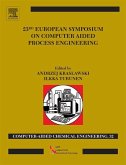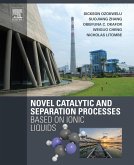This book presents the fundamentals and the applications of photoelectrocatalysis, such as hydrogen production from water splitting, the remediation of harmful compounds, and CO2 reduction. Photoelectrocatalytic reactors and light sources, in addition to kinetic aspects, are presented along with an exploration of the relationship between photocatalysis and electrocatalysis. In addition, photocorrosion issues and the application of selective photoelectrocatalytic organic transformations, which is now a growing field of research, are also reported. Finally, the advantages/disadvantages and future perspectives of photoelectrocatalysis are highlighted through the possibility of working at a pilot/industrial scale in environmentally friendly conditions.
- Presents the fundamentals of photoelectrocatalysis
- Outlines photoelectrocatalytic green chemistry
- Reviews photoelectrocatalytic remediation of harmful compounds, hydrogen production, and CO2 reduction
- Includes photocorrosion, photoelectrocatalytic reactors, and modeling along with kinetic aspects
Dieser Download kann aus rechtlichen Gründen nur mit Rechnungsadresse in A, B, BG, CY, CZ, D, DK, EW, E, FIN, F, GR, HR, H, IRL, I, LT, L, LR, M, NL, PL, P, R, S, SLO, SK ausgeliefert werden.









